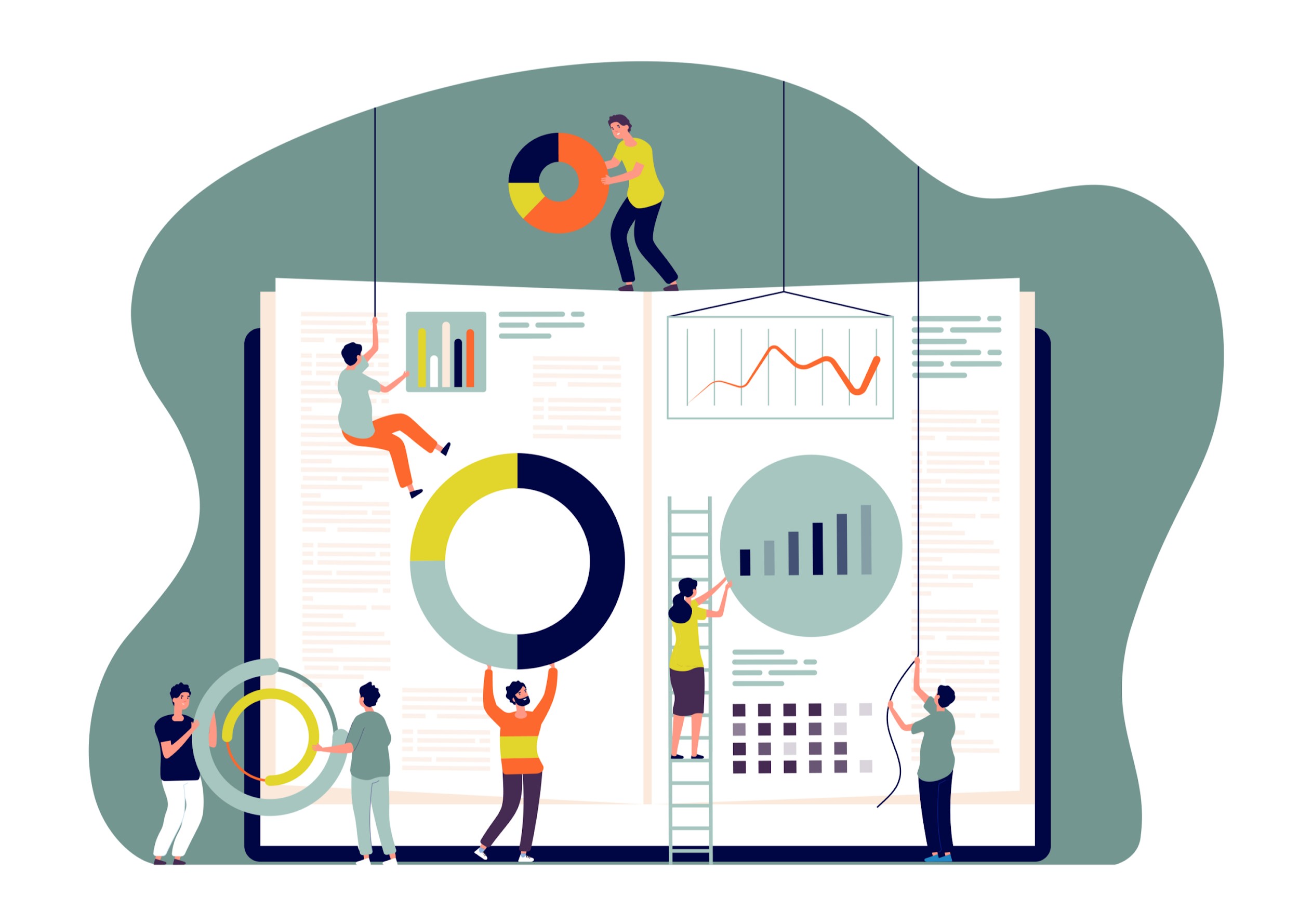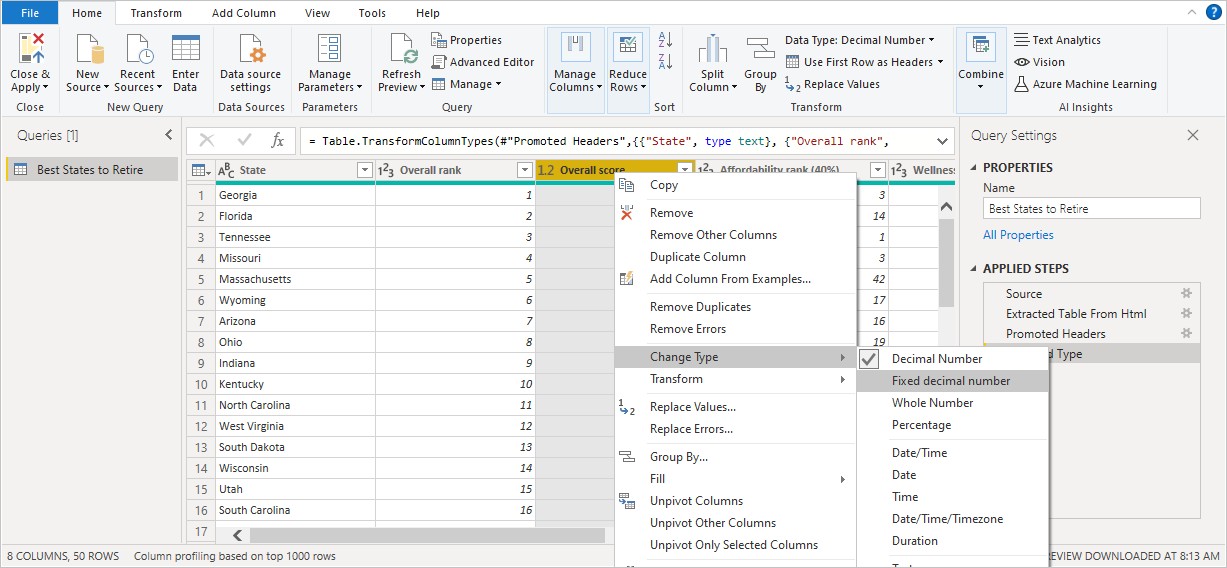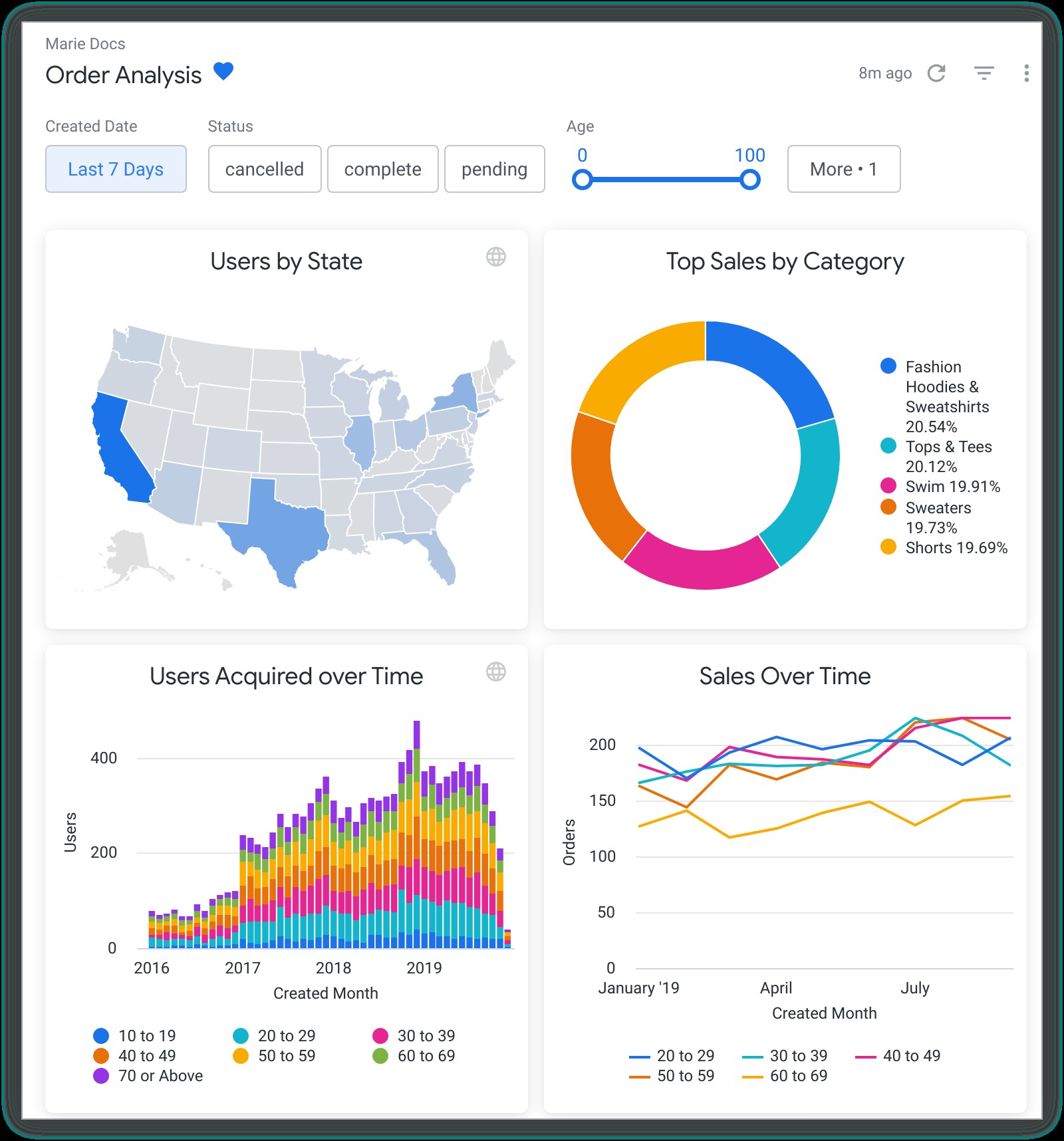What Is Business Intelligence?
10 minutes
14
In the era of big data, businesses are flooded with an overwhelming amount of information. If you don’t have a way to effectively process and interpret this data, it becomes as hard as navigating a dense jungle without a map.
That’s where business intelligence comes in—a powerful tool that enables businesses to make data-driven decisions leading to growth and profitability. But it’s not just about crunching numbers and generating reports. Business intelligence is a way of thinking that permeates every aspect of an organization, from finance to marketing to operations.
Let’s explore the fascinating world of business intelligence and discuss how it can improve the way you do business.
What Is Business Intelligence?
Business intelligence refers to the process of collecting, analyzing, and presenting data to help organizations make informed business decisions. With its help, organizations gain insights into various processes like their operations, customer behavior, and market trends. This allows them to identify new opportunities, improve efficiency, and gain a competitive advantage.
BI works by collecting raw data from various sources, such as internal systems, customer interactions, social media, and other external data sources. This data is then transformed into a format that can be easily processed and analyzed to identify patterns, trends, and insights. More specifically, it involves working with data warehouses, data mining, and data visualization software that allows business users to explore and analyze data in meaningful ways.
Business Intelligence vs. Business Analytics
While both BI and BA involve data analysis and are related, these concepts serve different purposes in organizations. By definition, BI is focused on historical data analysis to monitor and optimize business performance, while BA is focused on predictive analytics to identify new opportunities for growth and innovation.
However, the line is blurry. There is some overlap between BI and BA in terms of the sources used and the techniques applied. What’s more, different organizations may define these terms differently based on their unique needs, goals, and organizational structures.
What Business Intelligence Is Not
There can be misconceptions about BI’s scope and limitations.
- Business intelligence is not a silver bullet. It is just one tool among many that businesses can use to gain a competitive edge.
- It is not a one-size-fits-all solution. Different businesses have different needs, and the tools and techniques that work for one company may not work for another.
- It is not just for big businesses. While larger companies may have more resources to invest in BI, smaller businesses can also benefit from the insights that it provides. There are many affordable and accessible tools on the market that can be used by businesses of all sizes.
Types of Business Intelligence Tools
There is a decent selection of different business intelligence tools that organizations can use to collect, analyze, and present data. Here are some of the most common types:
Reporting and Querying Tools
Reporting and querying tools are needed to extract, organize, and format business data from one or more sources into reports and dashboards. The most common use cases for business analysts and managers are creating ad hoc and pre-built reports, which can be exported to various formats—Excel, PDF, or HTML.
Online Analytical Processing Tools
OLAP tools help users analyze multidimensional data sets, e.g., sales or financial data, using a variety of interactive visualizations, including pivot tables, charts, and graphs. These tools allow users to drill down into data to gain insights into trends and patterns.
Data Visualization Tools
Business users use data visualization software to create interactive, visual representations of data. These tools are meant to make complex data more accessible and understandable, using a range of charts, graphs, and other graphical representations.
Data Mining Tools
The purpose of data mining tools is to analyze large, complex data sets to identify patterns, trends, and relationships. Here, machine learning algorithms are used to uncover hidden insights in data.
Dashboards
Dashboards give a real-time view of key performance indicators and metrics. In the business setting, they are used for an at-a-glance view of performance, which allows managers to quickly identify areas of concern and take action in a timely manner.
Mobile Business Intelligence Tools
The goal of mobile BI tools is to allow users to access and interact with data on smartphones and tablets. With these tools, there is a flexible and convenient way to access data on the go, and they are particularly useful for sales teams, field workers, and other mobile employees.
Value of BI for Business Users
Let’s highlight some of the key benefits of using BI:
- Trusted data – It is accurate, up-to-date, and easily accessible to the right people and helps organizations make better business decisions and ensure better future outcomes.
- Improved operational efficiency – BI offers insights into KPIs and broader business information. And by monitoring and analyzing operations data, organizations can identify bottlenecks, inefficiencies, and areas where they can improve productivity or reduce costs.
- Increased revenue and profitability – This means new business opportunities and optimization of existing operations. As a result, organizations can identify new markets, develop new products, and optimize pricing and promotions.
- Enhanced customer experience – This point involves insights into customer behavior, preferences, and needs. With BI capabilities, organizations are now able to tailor their products, services, and marketing efforts to precisely meet customer needs and improve the overall customer experience.
- Improved employee satisfaction – As a bonus, you can also reduce the burden of manual data analysis. This can lead to a sense of empowerment and engagement because employees feel more connected to and valued for the work they are doing.
- Improved risk management – BI can highlight potential issues and trends in an organization’s data. By monitoring business processes and using predictive analytics to identify potential issues, organizations can proactively manage risks and minimize their impact on the business.
How Business Intelligence Can Be Used in Various Industries
Business intelligence can be a valuable tool in a wide range of industries, enabling all kinds of organizations to leverage data and analytics.
Retail
Business intelligence gives retailers the chance to comprehensively analyze customers, sales trends, and inventory levels, and it indicates where to optimize operations. For instance, a retailer can use BI to determine the top-performing products, stores that have the highest sales, and products that are regularly out of stock.
Finance
The financial sector can leverage business intelligence to analyze market trends, portfolio performance, risk management, etc. Some of the ways banks can use BI tools include analyzing loan delinquencies, identifying high-risk borrowers, and monitoring credit risk exposure.
Healthcare
The healthcare industry can utilize business intelligence to analyze patient data, clinical outcomes, and resource utilization and identify high-risk patients, among other things, thereby facilitating informed decision-making regarding patient care, resource management, and clinical research.
Manufacturing
Business intelligence can be a powerful tool for manufacturers to analyze production data, supply chain performance, and quality control. Manufacturers can analyze production line efficiency, identify bottlenecks, and optimize scheduling, thus enabling informed decision-making regarding production planning, inventory management, and quality control.
Education
BI can help educational institutions improve student outcomes, enhance teaching methods, and manage resources more efficiently, which will lead to positive outcomes for students, faculty, and the institution as a whole.
Hospitality
Leveraging BI has become a necessity for businesses in the hospitality industry to remain competitive and meet the evolving needs of their customers. It can also help hospitality businesses manage inventory, staff scheduling, and pricing strategies.
Overall, where there is data in business, there is space for business intelligence.
Success Story: How Amazon Leveraged Business Intelligence to Drive Growth and Dominance
One of the best examples of a big brand that has successfully grown thanks to business intelligence is Amazon. From its humble beginnings as an online bookstore, Amazon has now become one of the largest and most influential companies in the world, with a market capitalization of over $1.5 trillion.
Amazon’s success is due in large part to its innovative use of business intelligence. By leveraging massive amounts of data about its customers’ browsing and purchasing habits, Amazon has been able to personalize the shopping experience and offer relevant product recommendations. This has not only improved the customer experience but also led to increased sales and customer loyalty.
Moreover, Amazon has also used business intelligence to optimize its supply chain and improve operational efficiency. By analyzing data about shipping times, inventory levels, and order processing, Amazon has been able to make real-time decisions that have reduced costs and improved delivery times.
Common Business Intelligence Mistakes to Avoid
There are several common mistakes that businesses can make when using business intelligence. Here are a few examples:
- Focusing too much on data and not enough on insights – Actual insights and conclusions can get lost in the shuffle. It’s important to keep the big picture in mind and use data to generate actionable insights.
- Not involving the right stakeholders – Don’t exclude important stakeholders from the process of developing and implementing business intelligence solutions. This can result in a lack of buy-in and support and can ultimately undermine the success of the initiative.
- Using outdated or incomplete data – This can result in inaccurate conclusions and poor decision-making. It’s important to ensure that the data being used is current, complete, and relevant.
- Failing to establish clear objectives – Without objectives, initiatives can easily become unfocused and directionless. You need to establish clear goals and objectives before implementing each initiative and regularly assess progress towards these goals.
- Not investing enough in training and development – Business intelligence technologies and techniques are always evolving, and you need to stay up-to-date on the latest trends and best practices.
Traditional Business Intelligence vs. Modern BI Platforms
Traditional business intelligence systems serve a single purpose, like reporting or data visualization. Often, they were built upon a data warehouse or a data mart, which requires significant upfront investment in both hardware and software.
On the other hand, new-generation BI tools are more flexible and adaptable. They have the capability to work with a wide variety of data sources—including structured and unstructured data—and handle real-time data processing. Also, these BI systems offer more advanced analytics capabilities, such as predictive analytics and machine learning.
One of the key differences between traditional BI and newer BI is the level of user-friendliness. Traditional BI solutions required significant technical expertise to set up and use and often required IT assistance to generate reports or run queries. Modern BI tools are typically designed to be more user-friendly and intuitive, with drag-and-drop interfaces and customizable dashboards.
Another important difference is the ability to work with big data. Traditional BI tools were designed for working with structured data, such as data stored in a relational database. Newer BI tools are able to handle unstructured data, such as social media data, IoT data, and other forms of big data.
How Business Intelligence Might Change in the Future
Business intelligence has come a long way since its inception, and one may argue that its evolution shows no signs of slowing down. Thanks to the advent of new technologies and ever-increasing volumes of data, the future of business intelligence is likely to be even more exciting and transformative than what organizations have seen so far.
Here are a few ways that BI solutions might change in the future:
- Increased emphasis on real-time analytics – As businesses become more reliant on real-time data, the need for real-time analytics will continue to grow.
- More automation and artificial intelligence – This could include everything from automated data collection and analysis to predictive modeling and decision-making.
- Greater emphasis on data security and privacy – This could include everything from more robust encryption and authentication methods to stricter regulations and compliance requirements.
- Integration with other emerging technologies – Integration with blockchain, the Internet of Things, and augmented reality could open up new opportunities for data discovery, collection, analysis, and decision-making.
For businesses that can harness the power of data, the future looks bright indeed.
We convert raw data into meanigful insights for you to make the best decisions.
Featured Articles
-

Top 5 Data Visualization Tools in 2023
A simplified representation of complex data is key for any data-driven business. Raw data must be turned into a cohesively formatted visual that is…
Read more -

SnowFlake: The Best Data Warehousing and Prescriptive Analytics Solution
Data Warehouse as a Service, or DWaaS, has gained much popularity in the past decade. It is a service primarily provided by Snowflake Inc,…
Read more -

Simple Mobile Analytical Stack: Firebase + BigQuery
Developing reliable and high-quality mobile and web applications requires a lot of dedication and, more importantly, a powerful and feature-rich development platform. Firebase, provided…
Read more





